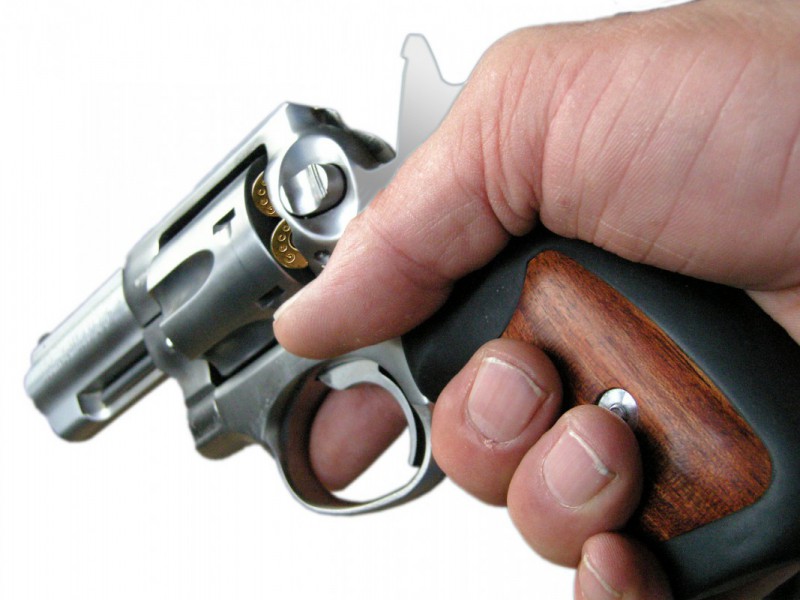During the recent vice presidential debate, Senator Edwards criticized Vice President Cheney for voting “against banning plastic weapons that can pass through metal detectors.” The ban to which Edwards was referring was the Undetectable Firearms Act of 1988. Cheney was one of only four representatives to vote against it.
Although this might bother some readers, there is a very simple reason that it should not: there is no such thing as a plastic gun. This fact is not news and should not require mentioning, but it seems that certain people keep forgetting it. For those readers who were not paying attention just then, perhaps it is worth repeating: there is no such thing as a plastic gun.
True, some guns have plastic components, but chamber pressure and heat requirements preclude the use of plastic in critical areas of the weapon. In other words, gun manufacturers are forced not by Congress, but by physics, to use metal: plenty of metal to trigger the alarm on any common detector. And there is no evidence that advances in material science will lift this constraint anytime soon. Guns that can evade metal detectors simply do not exist.
The “plastic gun” myth began in the mid-1980s with sloppy media coverage of the Austrian-made Glock. “The entire issue,” the Associate Director of Law Enforcement of the Bureau of Alcohol, Tobacco and Firearms testified in 1986, “was raised in response to reports, many wildly inaccurate, concerning a particular firearm, the Glock 17.” In January 1985, the Washington Post ran an article by “investigative” reporter Jack Anderson titled, “Qaddafi Buying Austrian Plastic Pistol.” In his article, Anderson claimed that the Libyan dictator was ordering the Glock 17 because “it is frighteningly easy to smuggle past airport security.” (If true, this is a censure of airport security, not evidence of the pistol’s stealth.) A year later, Anderson announced that the Glock 17 was “extremely hard to recognize on the x-ray screen.” Despite the fact that this was a complete lie, Anderson’s hysteria was contagious and soon Forbes Magazine was calling the Glock 17 “the latest terrorist weapon to menace air travelers around the world.” It did not take long for this ignorant lunacy to reach eager gun prohibitionists in Congress. Senators like Howard Metzenbaum and Ted Kennedy got the message loud and clear: “do something!”
Meanwhile, some obvious facts about the Glock 17 were surfacing. Like, for one, it is not entirely made of plastic. Both the barrel and slide, two of the largest components of any semi-automatic pistol, are made of hardened steel–a whole pound of it. By weight, 83% of the pistol is steel. And, as it turns out, even many of the plastic parts are reinforced with metal to provide structural integrity. Glock made the grip and much of the frame out of plastic instead of metal to make the weapon lighter, not to help sneak it into airports. In fact, all that plastic is not very helpful in sneaking into airports anyway: the dense polymer used in the design is reflective in the x-ray band and therefore clearly visible in an x-ray image. The Astrophysics Research Corporation, which at the time was the world’s largest manufacturer of x-ray security equipment and supplier to 90% of U.S. airports, noted after testing that, “The Glock 17 looks exactly like any other automatic pistol when viewed on the television monitor of our Linescan airport x-ray security machine. Further, it causes our Mark 100 Metal Detector to alarm at the normal setting just as any other pistol does…even the plastic frame shows clearly.”
While fear-mongers in Congress were revving up to convince practically everyone except Dick Cheney that “plastic guns” were a threat to airport security, Billie Vincent, FAA Director of Civil Aviation Security, was testifying to the House Subcommittee on Crime about the silliness of it all. “Despite a relatively common impression to the contrary,” he summarized, “there is no current non-metal firearm which is not reasonably detectable by present technology and methods in use at our airports today, nor to my knowledge is anyone on the threshold of developing such a firearm.”
One could assume out of generosity–or perhaps gullibility–that these facts were not widely known during the late 1980s, and one might even forgive those who made “plastic guns” an issue back then. But when over a decade later prominent figures still raise Cain over “plastic guns,” only one conclusion is possible: the lie is intentional. In 2000, Handgun Control, Inc. blasted Senator John McCain for voting against a bill that would have banned the “sale and importation of undetectable plastic guns.” In another report in the same year, Sarah Brady criticized then vice presidential candidate Dick Cheney for being “one of only four members to vote against the ban on plastic guns.” In 2002, the Brady Campaign to Prevent Gun Violence called the Gun Owners of America “extremist” for opposing restrictions on “‘plastic guns’ which cannot be detected by metal detectors.” Last year, representative James Sensenbrenner, Jr. urged Senator Charles Schumer to help achieve “Senate passage of legislation that bans undetectable firearms, or so-called ‘plastic guns.'”
Possibly the most outrageous illustration of current “plastic gun” propaganda is Senator Carl Levin’s October 2003 letter to President Bush urging him to “permanently reauthorize the plastic gun law.” “Plastic guns,” he writes, “whose production has been endorsed by the National Rifle Association, should only be used by our military and intelligence agencies and must never find their way back into our communities.” What on earth is he talking about? Perhaps the Senator would also like the President to replace military vehicles with unicorns and arm Marines with “light sabers” and training in “Jedi arts.” (Provided there is a law to make sure those unicorns “never find their way back into our communities,” of course.) “I think,” the Senator continues, “the overwhelming majority of my colleagues would agree that plastic guns pose a clear and present danger to our nation’s aviation security.” Is “think” really the right word for what was going on in the Senator’s head? Excluding the institutionalized, few people would expect their colleagues to agree that fictional objects qualify as “a clear and present danger.”
Then again, there was Senator Edwards on national television scolding Vice President Cheney for his failure support a ban on plastic guns. Maybe Edwards is right. Maybe plastic guns should be banned. Like any figment of one’s imagination, it should be easy enough to make plastic guns go away: let’s just all stop talking about them.




